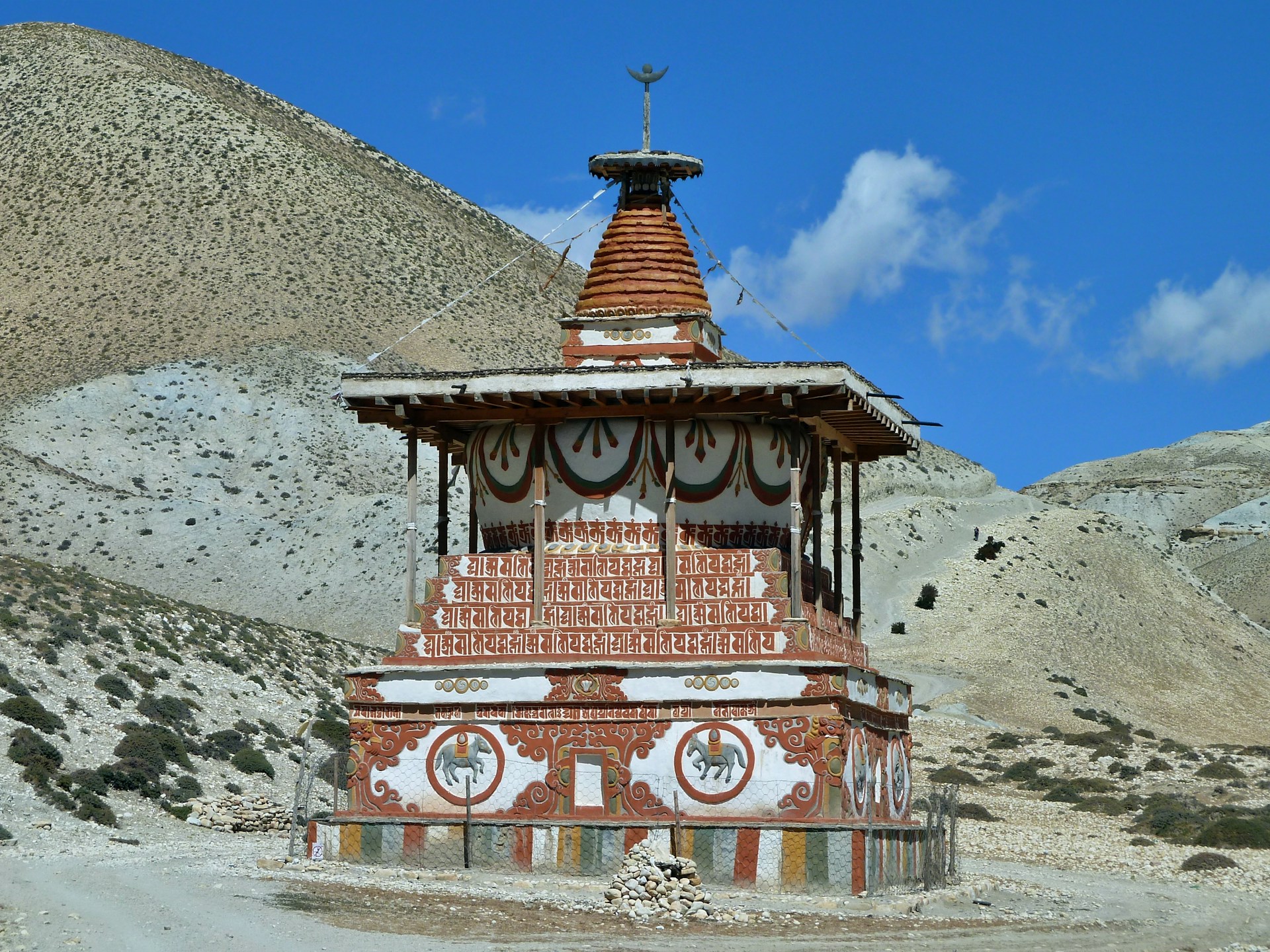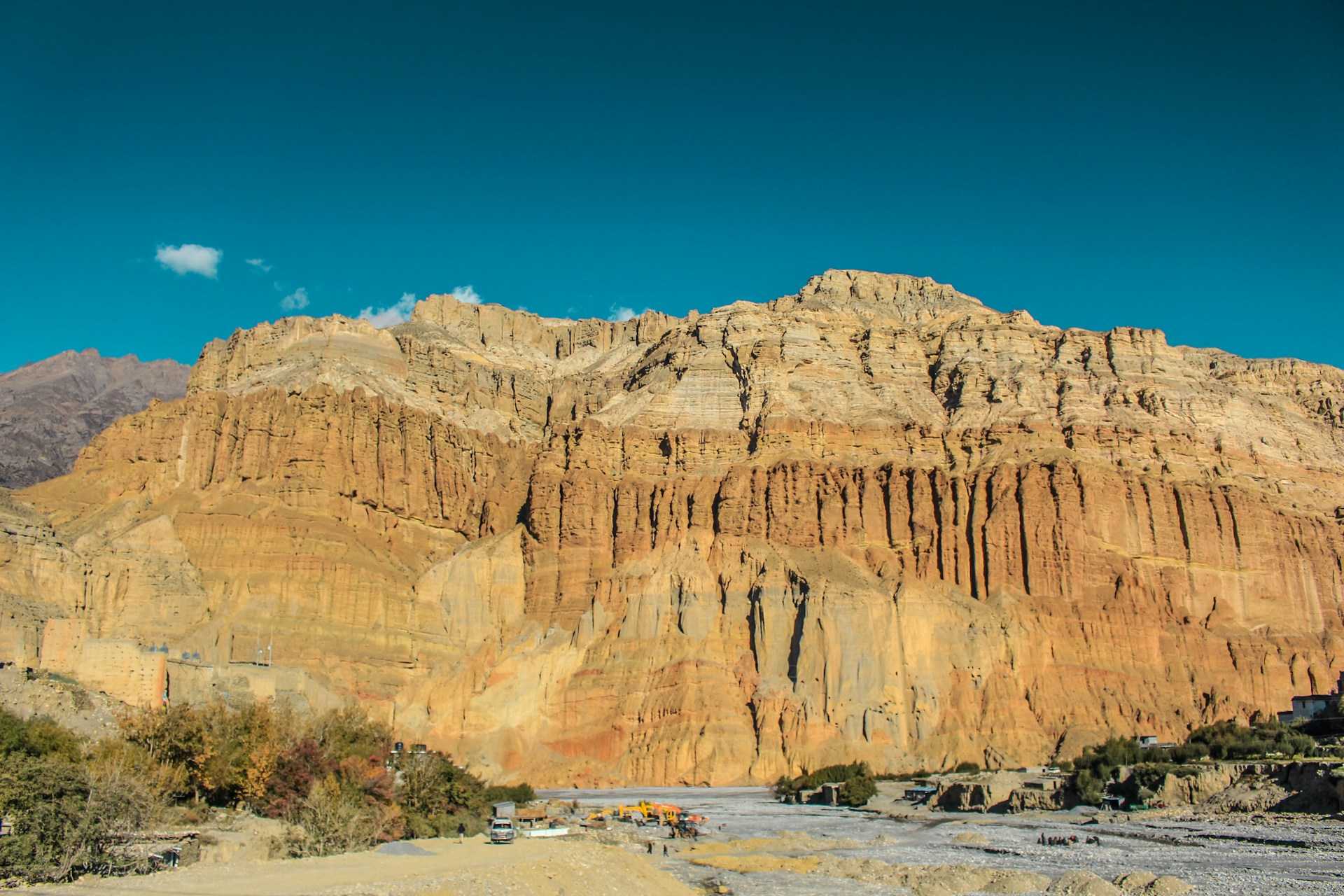Upper Mustang Trekking Fee Update for Trekkers: New Rules and Costs Explained

Introduction: Upper Mustang Permit Fee – What has Changed
The Upper Mustang Permit Fee is one of the most important things to understand before planning a trip to this special region of Nepal. Upper Mustang is a restricted area, which means trekkers must follow certain rules and pay specific fees to enter. These permits are in place to safeguard the area’s culture, environment, and its ancient heritage, including the walled city of Lo Manthang.
In recent years especially just recently in November, some parts of the upper mustang permit fee system have changed. These updates include new costs, new rules, and clearer guidelines for anyone who wants to trek in this remote Himalayan region. For example, the government still requires a Restricted Area Permit Nepal, and every visitor must travel with a licensed guide. These measures are designed to regulate tourism and ensure the safety of trekkers navigating this arid, windy, and elevated terrain.
A few other fees also matter, such as the Upper Mustang entry fee for protected areas and the regular Annapurna Conservation Area Permit (ACAP), which remains necessary for traveling through the Mustang region.
Understanding these changes is important so trekkers know the correct upper mustang permit fee and can plan their budget, documents, and travel dates properly.
Coming up, we’ll break down the new regulations, the associated fees, and the specific permits required for each trekker.
Types of Upper Mustangs Permits Required
Trekking in Upper Mustang offers a unique experience compared to other parts of Nepal, primarily because it’s a protected and restricted area. Anyone wishing to explore this region must obtain specific Upper Mustang permits. These permits serve several purposes: they safeguard the local culture, regulate the flow of tourists, and contribute to the area’s overall safety.
Here are the main permits you need:
1. Restricted Area Permit (RAP) – Mandatory
This is the most important Upper Mustang permit you need.
- It is required for anyone entering the restricted zone.
- The cost is higher than normal permits because the region is very sensitive.
- Trekking parties must be accompanied by a licensed guide, and applications must include at least two individuals to apply.
- This policy is in place to ensure safety and compliance with Nepal’s trekking regulations for restricted zones.
2. Annapurna Conservation Area Permit (ACAP)
Upper Mustang lies inside the larger Annapurna region.
- Because of this, all trekkers must also buy the ACAP permit.
- The fee helps support conservation, trail repair, and local communities.
3. TIMS Card (in some cases)
Trekkers also need a TIMS (Trekkers’ Information Management System) card, issued through a licensed trekking agency in Nepal like Skyline Treks.
- It helps track trekkers in remote areas and is useful during emergencies.
These are the key Upper Mustang permits you must have before entering Upper Mustang. In the next section, we will explain the latest upper mustang permit fees in 2025, the cost changes, and updated rules, including what the new prices mean for foreign trekkers.
Updated Upper Mustang Permit Fee for Foreigners (2026)
The Upper Mustang permit system has undergone significant changes, and knowing about these updates are crucial for anyone considering a trek in this restricted area of Nepal. For many years, foreign trekkers had to pay a fixed USD 500 for the first ten days of travel inside Upper Mustang.
Upper Mustang Permit fee remained constant, regardless of whether your stay in the area lasted three days or a full ten. Beyond the initial ten days, an additional USD 50 per day was required from trekkers. This made Upper Mustang one of the most expensive trekking destinations in Nepal.
Just recently late in November 2025, Nepal’s government implemented a new regulation aimed at boosting accessibility to the region, all while safeguarding its unique culture and natural surroundings.
Under the updated system, the Upper Mustang Permit Fee is now USD 50 per day for foreigners. There is no longer a minimum of 10 days. This means trekkers now pay only for the number of days they actually spend in Upper Mustang.
Here’s how the new Upper Mustang permit fee works in simple examples:
- 3 days in Upper Mustang: 3 × USD 50 = USD 150
- 5 days in Upper Mustang: 5 × USD 50 = USD 250
- 7 days in Upper Mustang: 7 × USD 50 = USD 350
- 10 days in Upper Mustang: 10 × USD 50 = USD 500 (same as old rate, but now flexible)
This Upper Mustang permit fee change helps travelers who want a shorter trek or are visiting only key areas like Lo Manthang. Furthermore, it promotes responsible tourism practices by eliminating excessive expenses and making this culturally rich area more accessible to a wider audience.
It is important to remember that the Upper Mustang is still a Restricted Area in Nepal.
This means:
- You must trek with a licensed guide
- You must travel through a registered trekking agency like Skyline Treks.
- Solo trekking is not allowed
- Permit checkpoints in Mustang will check your documents
The updated Upper Mustang permit fees for foreigners makes trekking in this region more flexible, more budget-friendly, and easier to plan.
Group vs Solo Trekking Cost Implications
When planning a trek to Upper Mustang, one important factor to consider is whether to go solo or as part of a group. The expenses associated with permits, guides, porters, and lodging can vary quite a bit, depending on which route you choose.
Knowing these cost differences is essential for setting a realistic budget.
1. Permit Costs
- The Upper Mustang Permit Fee is charged per person, so whether you trek solo or in a group, the daily rate of USD 50 per day (2026) applies to each trekker.
- Other permits, like the Annapurna Conservation Area Permit (ACAP), are also per person.
2. Guide and Porter Fees
- A licensed guide is mandatory in Upper Mustang.
- For solo trekkers,, the price of a guide remains constant, regardless of whether you’re solo or in a group. Essentially, the entire guide’s fee is shouldered by a single individual. This can make solo trekking significantly more expensive.
- Groups can split the guide and porter fees among members, reducing the per-person cost. For example:
- Guide: USD 30/day; Solo = USD 30 per person, Group of 4 = USD 7.50 per person
- Porter: USD 20/day; Solo = USD 20 per person, Group of 4 = USD 5 per person
3. Accommodation and Meals
- Solo trekkers pay full price for rooms, while groups can often share rooms or negotiate rates, lowering costs.
- Tea house meals are charged per person, so food costs are mostly the same.
4. Transportation and Miscellaneous
- Hiring private vehicles to the trailhead may be more expensive per person for solo travelers.
- Shared transport and group arrangements reduce overall costs for everyone.
5. Safety and Convenience
- While trekking alone offers independence, joining a group can reduce costs and provide support, especially in this restricted area of Nepal. In this region, a licensed guide is required, and checkpoints require proper documentation.
Summary:
Solo trekking in Upper Mustang is more expensive per person due to guide and porter fees, whereas group trekking spreads these costs, making it more budget-friendly. Organizing a trek with a group offers more than just financial savings; it also contributes to increased safety and a more enjoyable experience while exploring this isolated part of the Himalayas.
Conclusion: Upper Mustang Permit Fee & Trekking Costs
The Upper Mustang Permit Fees and associated costs are an important part of planning a trek to this unique Himalayan region. With the recent update, foreign trekkers now pay USD 50 per day, making it more flexible and affordable than the previous fixed-rate system.
In addition to the daily permit fee, trekkers should consider other charges, including the Annapurna Conservation Area Permit (ACAP), TIMS card (if required), guide and porter fees, accommodation, meals, and minor checkpoint entry fees. Knowing all these costs helps plan a realistic budget and prevents surprises on the trail.
Trekking in a group can significantly reduce per-person expenses, especially for guide and porter fees, while solo trekking provides more independence but at a higher cost. Regardless of your choice, all trekkers must follow restricted area rules, use licensed guides, and respect local regulations.
Knowing the current Upper Mustang permit fees for foreigners, along with any extra trekking costs, is key to a hassle-free and enjoyable trip. Proper planning allows you to fully appreciate the breathtaking scenery, rich culture, and unique heritage of Upper Mustang while trekking there, free from any unexpected issues.

